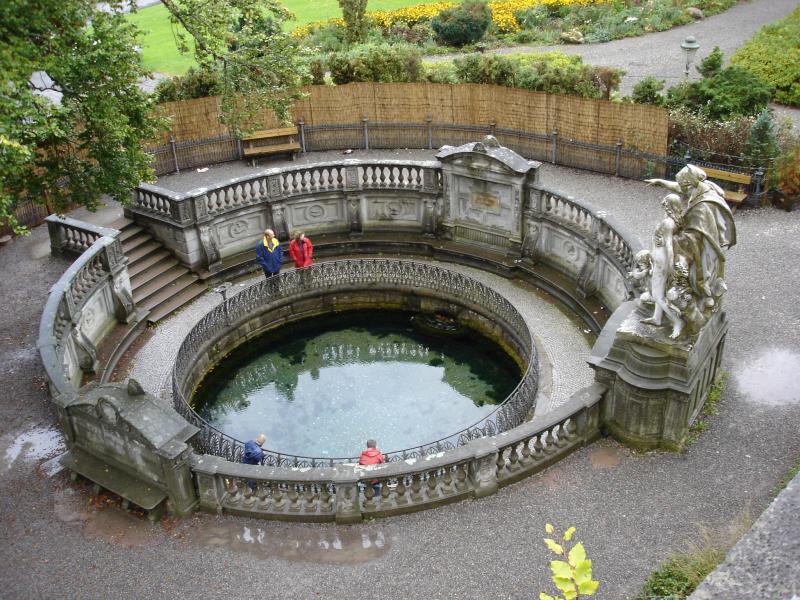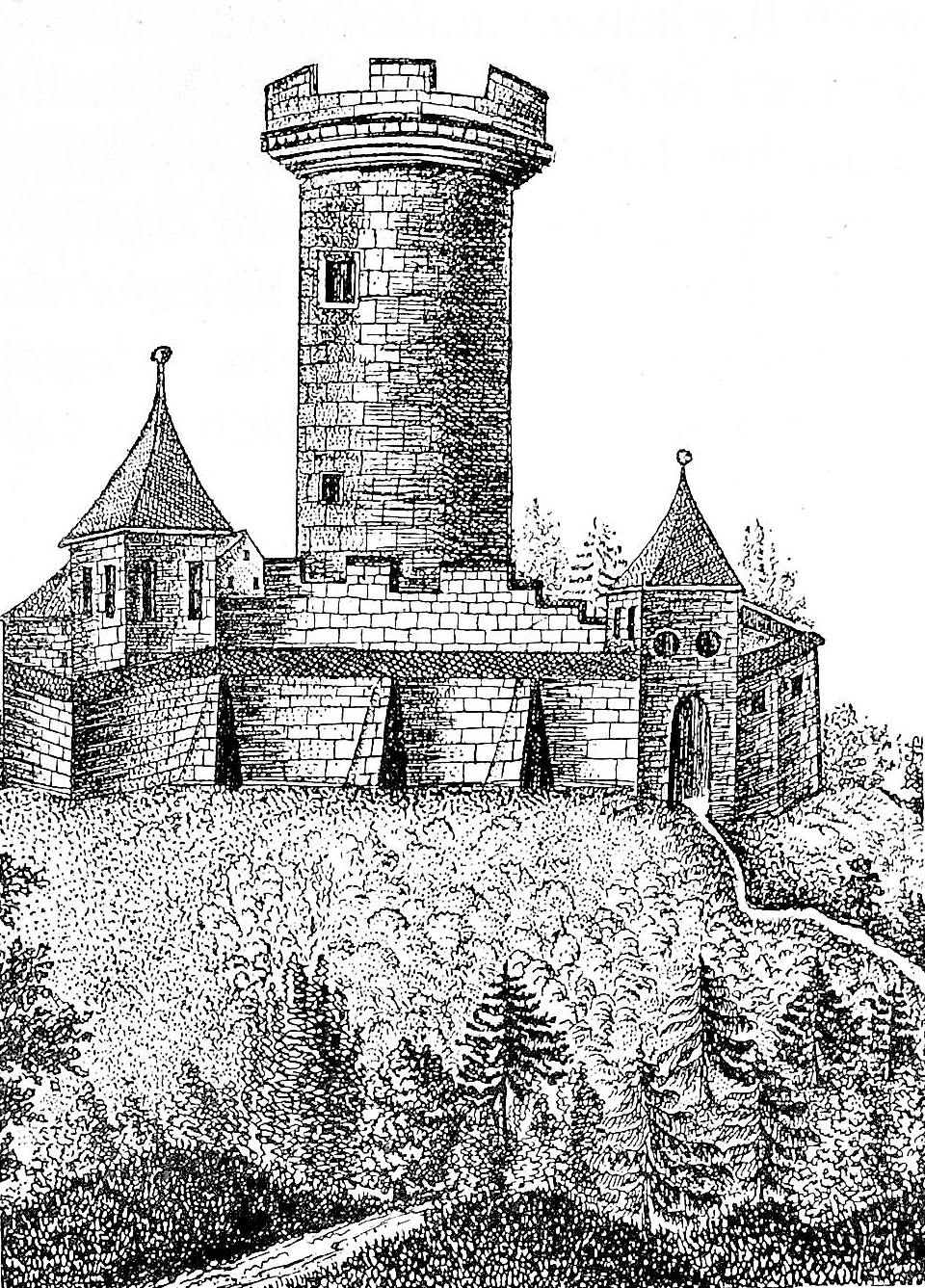|
Höllental (Black Forest)
The Höllental (English translation: Hell's Valley) in the Black Forest is a deep valley - in places like a gorge - in the state of Baden-Württemberg in Germany. The valley, which is about 9 km long, is located in the southern part of the Southern Black Forest Nature Park about 18 km southeast of Freiburg im Breisgau between Hinterzarten and Buchenbach-''Himmelreich''. The ''Rotbach'' stream (also called ''Höllenbach'' in the upper Höllental) runs through the valley. "Hölle" is the German word for "hell". In the narrow, dark valley, travellers almost felt like moving underground. The valley was the locale of the Battle of Emmendingen in 1796, part of the French Revolutionary Wars. Formation The Höllental is one of the valleys in the Black Forest that cuts through the asymmetric ridgeline of mountains from its plateau-like eastern uplands and runs down its steep western escarpment. The valley follows the line of the Bonndorf Rift Valley (''Bonndorfer Graben''), which ... [...More Info...] [...Related Items...] OR: [Wikipedia] [Google] [Baidu] |
Hoellental 1900
Hell Valley or Valley of Hell may refer to: * Höllental (Black Forest), a deep valley in the state of Baden-Württemberg, Germany ** Hell Valley Railway, a line that runs through the valley * Höllental (Franconian Forest), a protected nature reserve in Bavaria, Germany * Höllental (Lower Austria), a valley in the Alps along the River Schwarza * Höllental (Wetterstein), a mountain path up the Zugspitze The Zugspitze (), at above Normalhöhennull, sea level, is the highest peak of the Wetterstein Mountains as well as the highest mountain in Germany. It lies south of the town of Garmisch-Partenkirchen, and the Austria–Germany border runs over ... on the German-Austrian border * Val d'Enfer, a valley in Provence, France * ''The Valley of Hell'' (film), a 1927 American Western * Thermal Valley, Taiwan See also * Heil Valley, Victoria Land, Antarctica * Hill Valley (other) {{Disambiguation, geo ... [...More Info...] [...Related Items...] OR: [Wikipedia] [Google] [Baidu] |
Leopold I, Holy Roman Emperor
Leopold I (Leopold Ignaz Joseph Balthasar Franz Felician; hu, I. Lipót; 9 June 1640 – 5 May 1705) was Holy Roman Emperor, King of Hungary, Croatia, and Bohemia. The second son of Ferdinand III, Holy Roman Emperor, by his first wife, Maria Anna of Spain, Leopold became heir apparent in 1654 by the death of his elder brother Ferdinand IV. Elected in 1658, Leopold ruled the Holy Roman Empire until his death in 1705, becoming the second longest-ruling Habsburg emperor (46 years and 9 months). He was both a composer and considerable patron of music. Leopold's reign is known for conflicts with the Ottoman Empire in the Great Turkish War (1683-1699) and rivalry with Louis XIV, a contemporary and first cousin (on the maternal side; fourth cousin on the paternal side), in the west. After more than a decade of warfare, Leopold emerged victorious in the east thanks to the military talents of Prince Eugene of Savoy. By the Treaty of Karlowitz, Leopold recovered almost all of the Kingd ... [...More Info...] [...Related Items...] OR: [Wikipedia] [Google] [Baidu] |
Jean Victor Marie Moreau
Jean Victor Marie Moreau (, 14 February 1763 – 2 September 1813) was a French general who helped Napoleon Bonaparte to power, but later became a rival and was banished to the United States. Biography Rise to fame Moreau was born at Morlaix in Brittany. His father was a successful lawyer, and instead of allowing Moreau to enter the army, as he attempted to do, insisted on Moreau studying law at the University of Rennes. Young Moreau showed no inclination for law, but reveled in the freedom of student life. Instead of taking his degree, he continued to live with the students as their hero and leader, and formed them into a sort of army, which he commanded as their provost. When 1789 came, he commanded the students in the daily affrays which took place at Rennes between the young noblesse and the populace. In 1791, Moreau was elected a lieutenant colonel of the volunteers of Ille-et-Vilaine. With them he served under Charles François Dumouriez, and in 1793 the good order o ... [...More Info...] [...Related Items...] OR: [Wikipedia] [Google] [Baidu] |
Louis XVI Of France
Louis XVI (''Louis-Auguste''; ; 23 August 175421 January 1793) was the last King of France before the fall of the monarchy during the French Revolution. He was referred to as ''Citizen Louis Capet'' during the four months just before he was executed by guillotine. He was the son of Louis, Dauphin of France, son and heir-apparent of King Louis XV, and Maria Josepha of Saxony. When his father died in 1765, he became the new Dauphin. Upon his grandfather's death on 10 May 1774, he became King of France and Navarre, reigning as such until 4 September 1791, when he received the title of King of the French, continuing to reign as such until the monarchy was abolished on 21 September 1792. The first part of his reign was marked by attempts to reform the French government in accordance with Enlightenment ideas. These included efforts to abolish serfdom, remove the ''taille'' (land tax) and the ''corvée'' (labour tax), and increase tolerance toward non-Catholics as well as abolis ... [...More Info...] [...Related Items...] OR: [Wikipedia] [Google] [Baidu] |
Marie Antoinette
Marie Antoinette Josèphe Jeanne (; ; née Maria Antonia Josepha Johanna; 2 November 1755 – 16 October 1793) was the last queen of France before the French Revolution. She was born an archduchess of Austria, and was the penultimate child and youngest daughter of Empress Maria Theresa and Emperor Francis I. She became dauphine of France in May 1770 at age 14 upon her marriage to Louis-Auguste, heir apparent to the French throne. On 10 May 1774, her husband ascended the throne as Louis XVI and she became queen. Marie Antoinette's position at court improved when, after eight years of marriage, she started having children. She became increasingly unpopular among the people, however, with the French ''libelles'' accusing her of being profligate, promiscuous, allegedly having illegitimate children, and harboring sympathies for France's perceived enemies—particularly her native Austria. The false accusations of the Affair of the Diamond Necklace damaged her reputation further ... [...More Info...] [...Related Items...] OR: [Wikipedia] [Google] [Baidu] |
Falkenstein Castle (Höllental)
Falkenstein Castle (german: Burg Falkenstein) is a ruined hill castle near Freiburg im Breisgau on the territory of the present-day municipality Breitnau in the county of Breisgau-Hochschwarzwald in the German state of Baden-Württemberg. The castle site lies in a triangle formed by the entrance of the Höllental valley – the Lower Höllental and the Engenbach valley, not far from the Buchenbach village of Falkensteig, on a rocky crag that is very difficult to get to today. Of the castle itself only a few wall remains are left. It is one of the less well preserved ruins in the Breisgau. History The castle may have been built around 1200 on a steep eminence at the lower entrance to the Höllental, also known as the ''Falkensteige'', by a Zähringen ''ministerialis'' family. Its founders probably came from the Wittental valley from the lords of Weiler and Blankenberg and are first recorded from 1137 to 1148 as the lords of Falkenstein. In the ensuing period they rose to ... [...More Info...] [...Related Items...] OR: [Wikipedia] [Google] [Baidu] |
Donaueschingen
Donaueschingen (; Low Alemannic: ''Eschinge'') is a German town in the Black Forest in the southwest of the federal state of Baden-Württemberg in the Schwarzwald-Baar '' Kreis''. It stands near the confluence of the two sources of the river Danube (in german: Donau). Donaueschingen stands in a basin within low mountainous terrain. It is located about south of Villingen-Schwenningen, west of Tuttlingen, and about north of the Swiss town of Schaffhausen. In 2015 the population was 21,750, making it the second largest town in the district (''Kreis'') of Schwarzwald-Baar. It is a regional rail hub. Geography Donaueschingen lies in the Baar basin in the southern Black Forest at the confluence of the Brigach and Breg rivers—the two source tributaries of the Danube—from which the town gets its name. This is today considered the true source of the Danube. An enclosed karst spring on the castle grounds, the source of the "Donaubach", is known as the source of the Danube ... [...More Info...] [...Related Items...] OR: [Wikipedia] [Google] [Baidu] |
House Of Zähringen
The House of Zähringen (german: Zähringer) was a dynasty of Swabian nobility. The family's name derived from Zähringen Castle near Freiburg im Breisgau. The Zähringer in the 12th century used the title of Duke of Zähringen, in compensation for having conceded the title of Duke of Swabia to the Staufer in 1098. The Zähringer were granted the special title of Rector of Burgundy in 1127, and they continued to use both titles until the extinction of the ducal line in 1218. The territories and fiefs held by the Zähringer were known as the 'Duchy of Zähringen' (), but it was not seen as a duchy in equal standing with the old stem duchies. The Zähringer attempted to expand their territories in Swabia and Burgundy into a fully recognized duchy, but their expansion was halted in the 1130s due to their feud with the Welfs. Pursuing their territorial ambitions, the Zähringer founded numerous cities and monasteries on either side of the Black Forest, as well as in the western S ... [...More Info...] [...Related Items...] OR: [Wikipedia] [Google] [Baidu] |
Hirschsprung (Black Forest)
The Black Forest Hirschsprung (german: Schwarzwälder Hirschsprung) is a legend from the Höllental valley in the Black Forest in Germany. Over time the name has passed from the legend to a place in the valley. Description The name means "stag leap" and it is a narrow, gorge-like section of the ravine-shaped central portion of the Höllental ("hell valley") with rock faces up to 130 metres high. It is also called the ''Höllenpass'' ("hell pass"). It is located on the parish boundary between Breitnau and Buchenbach. The Hirschsprung gorge was only 9 metres wide before the upgrade of the road. The southern Hirschsprung rocks have been tunnelled under by the ''Jägerpfad'' ("Jäger’s path"), which ran alongside the Höllenbach (or Rotbach) stream, but has been closed since 2009 due to the danger of falling rocks and rockface collapse. Eight hundred metres up the valley is the station on the Höllental Railway that is named after the Hirschsprung. Today it is only used as a ... [...More Info...] [...Related Items...] OR: [Wikipedia] [Google] [Baidu] |





